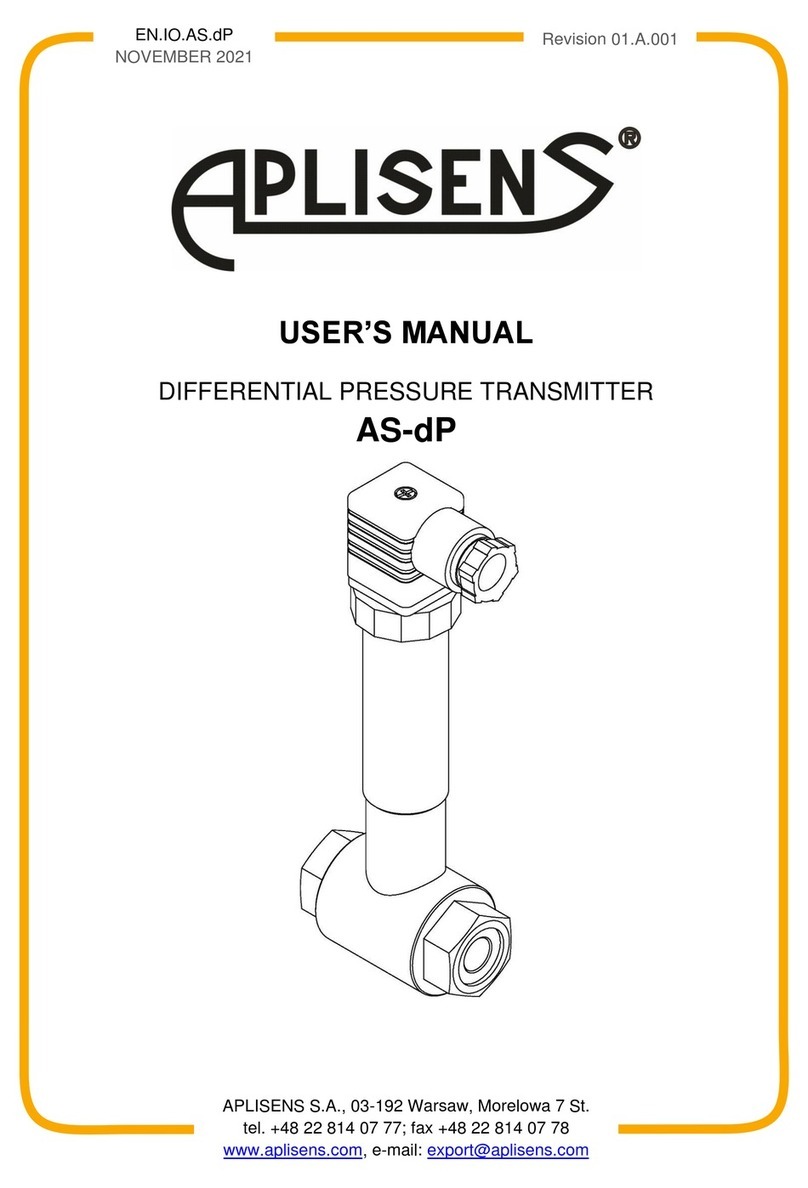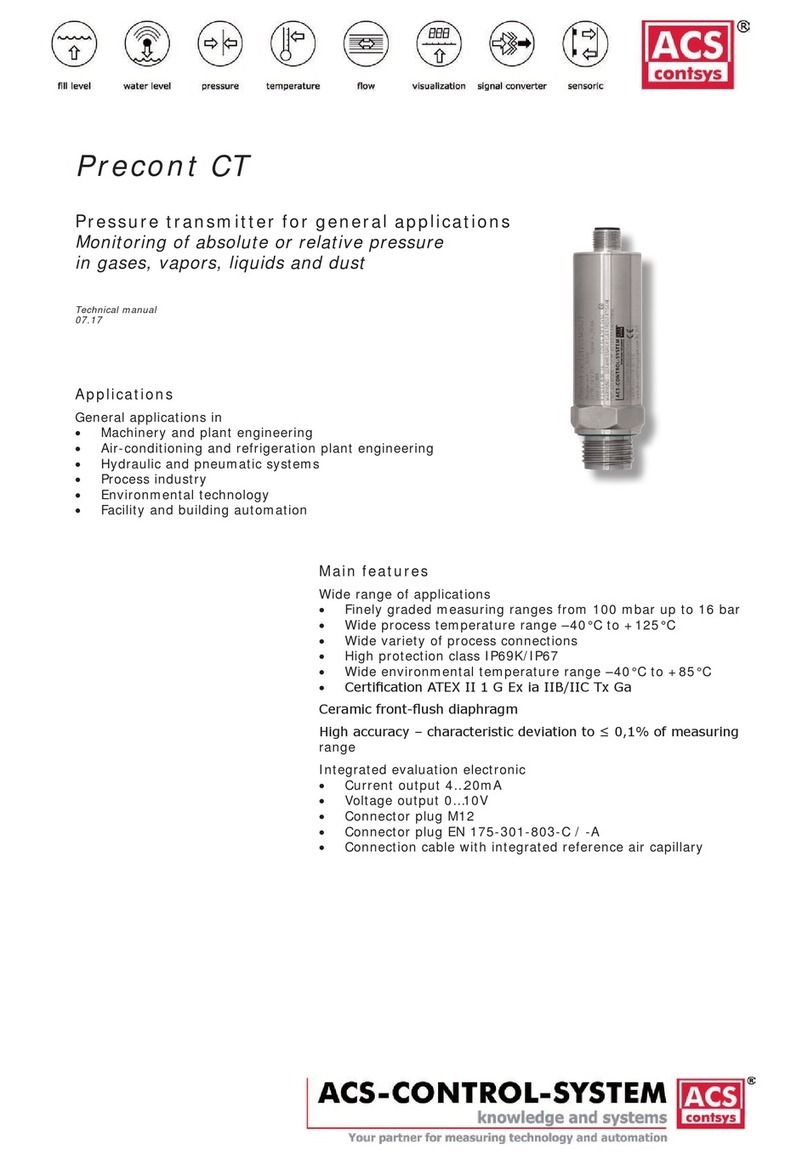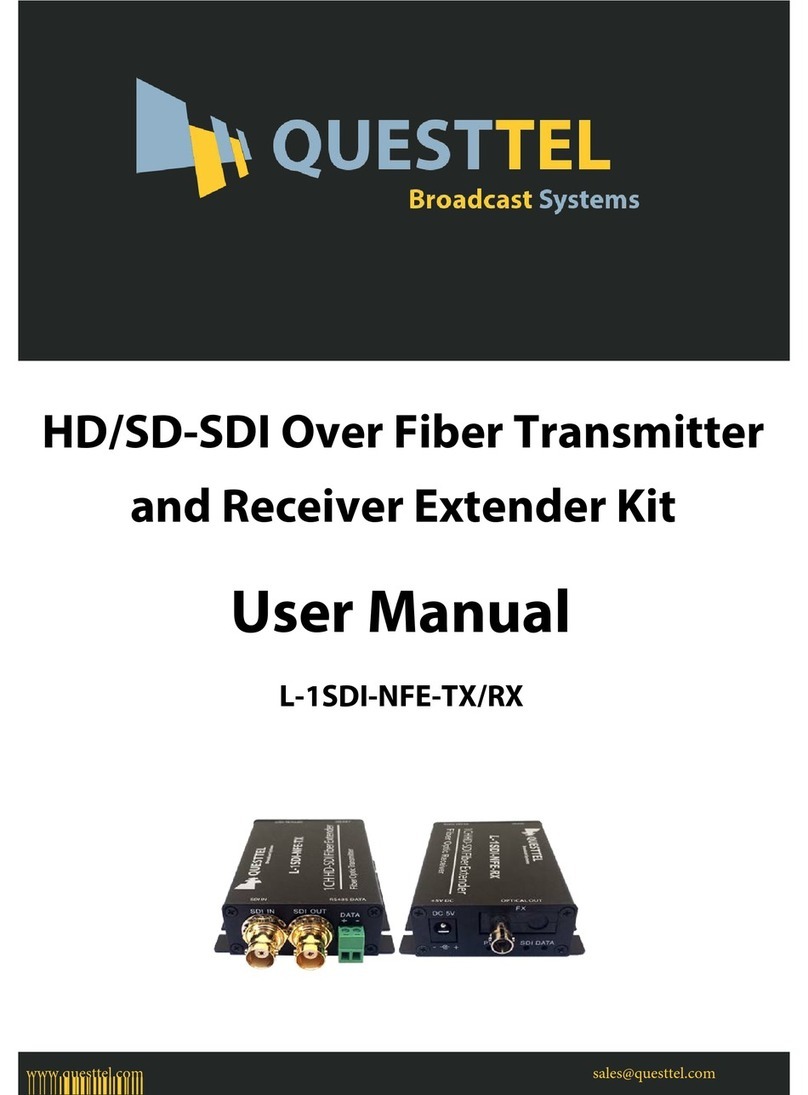Grayson Wireless GWMT0920 User manual

GWMT TRANSMITTER USER’S MANUAL
Manual Part No. MN002402
Rev. B
Issued 12/2001
Manual Assembly Instructions
Print this manual (double sided pages) on 20 lb. bond paper
Punch holes in printed pages for use in a three ring binder
Discard this sheet


GWMT TRANSMITTER USER’S MANUAL
Manual Part No. MN002402
Rev. B
Issued 12/2001

COPYRIGHT
Copyright © 2001 Allen Telecom Inc. All rights reserved.
All rights reserved. This document, and the Allen Telecom software to which it refers, are protected by
copyright. Both this document and the Allen Telecom software are furnished under license as provided in
such software and may be used only in accordance with that license. No part of this document or the
Allen Telecom software may be reproduced, stored in a retrieval system, or transmitted, in any form or by
any means, except as expressly provided in the license or with the prior written permission of Allen
Telecom.
Grayson Wireless
140 Vista Centre Drive
Forest, VA 24551
www.grayson.com
800-800-7465
TRADEMARKS
Invex3G™, Inspector 32 Suite®, Illuminator™, Fleet Illuminator™, Interpreter™, Surveyor®,
SpectrumTracker®, Cellscope®, and PageTracker® are trademarks of Allen Telecom.
Other product names mentioned herein may be the trademarks of their respective owners.
Manual Part Number MN 002402-A Issued 9/2001

GWMT Transmitter Manual Contents iii
TABLE OF CONTENTS
PREFACE__________________________________________________v
Certification ____________________________________________________________________ v
Warranty ______________________________________________________________________ v
In Case of Trouble _______________________________________________________________ v
Chapter 1: Introduction ______________________________________1
About This Manual___________________________________________________________________ 1
Contacting Grayson Wireless __________________________________________________________ 1
Corporate Headquarters __________________________________________________________ 1
Technical Support _______________________________________________________________ 1
Sales _________________________________________________________________________ 2
About the Measurement System Product _________________________________________________ 2
Measurement System Operational Overview___________________________________________ 2
CE and FCC Compliance__________________________________________________________ 2
RF Exposure ___________________________________________________________________ 3
Chapter 2: Preparation for Use ________________________________ 5
Introduction ________________________________________________________________________ 5
Precautions ________________________________________________________________________ 5
Shock Hazard __________________________________________________________________ 5
Equipment Modification ___________________________________________________________ 5
Static Sensitive Components _______________________________________________________ 5
Unpacking and Inspecting _____________________________________________________________ 5
PARTS LIST ___________________________________________________________________ 5
Chapter 3: Interface Description _______________________________ 7
Introduction ________________________________________________________________________ 7
Front Panel Features _________________________________________________________________ 7
Keypad Operation _______________________________________________________________ 7
Display LCD ____________________________________________________________________ 8
Power Switches and AC Fuse ______________________________________________________ 8
Side Panel Features _________________________________________________________________ 8
Chapter 4: Installation and Operation ___________________________9
Installation Procedure ________________________________________________________________ 9
Operation __________________________________________________________________________ 9
Power Source __________________________________________________________________ 9
Battery Operation________________________________________________________________ 9
Antenna Connection _____________________________________________________________ 9
Frequency Control _______________________________________________________________ 9
Amplitude Control ______________________________________________________________ 10
Modulation Control______________________________________________________________ 10
Transmit control ________________________________________________________________ 10
Display Control_________________________________________________________________ 11
Error Codes ___________________________________________________________________ 11

iv Contents GWMT Transmitter Manual
Chapter 5: Performance Specifications ________________________13
General __________________________________________________________________________ 13
Outside Dimensions and Weight ___________________________________________________ 13
Input Power ___________________________________________________________________ 13
Device Control LCD Display and Keyboard ___________________________________________ 13
RF Connection _________________________________________________________________ 13
Temperature Range_____________________________________________________________ 13
Over Temperature Protection (No Damage) __________________________________________ 13
RF General _______________________________________________________________________ 13
Signal Type ___________________________________________________________________ 13
Output Power Maximum__________________________________________________________ 13
Output Power Adjustment Range___________________________________________________ 13
Output Power Accuracy Absolute __________________________________________________ 13
Output Power Flatness over Temperature and Frequency _______________________________ 14
Output Impedance ______________________________________________________________ 14
Output VSWR _________________________________________________________________ 14
Frequency Stability _____________________________________________________________ 14
RF Load Protection _____________________________________________________________ 14
Output Harmonics and Spurious Emissions___________________________________________ 14
GWMT 0920 ______________________________________________________________________ 14
Frequency Range ______________________________________________________________ 14
Frequency Tuning Step Minimum __________________________________________________ 14
GWMT 1820 ______________________________________________________________________ 14
Frequency Range ______________________________________________________________ 14
Frequency Tuning Step Minimum __________________________________________________ 14
GWMT 0820 ______________________________________________________________________ 14
Frequency Range ______________________________________________________________ 14
Frequency Tuning Step Minimum __________________________________________________ 14
GWMT 1920 ______________________________________________________________________ 15
Frequency Range ______________________________________________________________ 15
Frequency Tuning Step Minimum __________________________________________________ 15
GWMT 2120 ______________________________________________________________________ 15
Frequency Range ______________________________________________________________ 15
Frequency Tuning Step Minimum __________________________________________________ 15
Chapter 6: Brief Technical Description_________________________17
Introduction _______________________________________________________________________ 17
Overview _________________________________________________________________________ 17

GWMT Transmitter Manual Preface v
PREFACE
Certification
Grayson Wireless (hereinafter called “GW”) certifies that this product met its published
specification at time of shipment from the factory.
Warranty
GW warrants to the original purchaser (hereinafter called “Buyer”) that Equipment manufactured
by GW shall be free, under normal use and service, from defects in material and workmanship for
a period of twelve (12) months from the date of delivery to the Buyer (the Warranty Period), and
shall conform to GW’s specifications. With respect to any equipment not manufactured by GW
(except for integral parts of GW’s Equipment to which the warranties set forth above shall apply),
GW gives no warranty, and only the warranty, if any, given by the manufacturer shall apply.
Warranty is available upon request.
The preceding paragraph sets forth the exclusive remedies for claims (except as to title) based
upon defects in or nonconformity of Equipment manufactured by GW, whether the claim is in
contract, warrant, tort (including negligence), strict liability or otherwise, and however instituted.
Upon the expiration of the warranty period, all such liability shall terminate. The foregoing
warranties are exclusive and in lieu of all other warranties, whether oral, written, expressed,
implied or statutory. NO IMPLIED OR STATUTORY WARRANTIES OF MERCHANT ABILITY
OR FITNESS FOR PARTICULAR PURPOSE SHALL APPLY. IN NO EVENT SHALL THE
SELLER BE LIABLE FOR ANY INCIDENTAL, CONSEQUENTIAL, SPECIAL, INDIRECT OR
EXEMPLARY DAMAGES.
DISCLAIMER
This manual has been developed by Grayson Wireless, a division of Allen Telecom Inc. and is
intended for the use of its customers and customer support personnel. The information in this
manual is subject to change without notice. While every effort has been made to eliminate errors,
Grayson Wireless disclaims liability for any difficulties arising from the interpretation of the
information contained herein. The information contained herein does not claim to cover all details
or variations in equipment nor to provide for every possible incident to be met in connection with
installation, operation, or maintenance. Should further information be desired, or should particular
problems arise which are not covered sufficiently for the purchaser’s purposes, contact Grayson
Wireless, 140 Vista Centre Drive, Forest VA 24551.
In Case of Trouble
Should further information be desired, or should particular problems arise which are not covered
sufficiently for the purchaser’s purposes, contact Grayson Wireless, 140 Vista Centre Drive,
Forest VA 24551 (800-800-7465).


GWMT Transmitter Manual Chapter 1: Introduction 1
Chapter 1: Introduction
About This Manual
This manual provides an overview of the GWMT Transmitter family. These transmitters are the
propagation test configuration partners for the Invex3G data collection platform receivers.
Also included in this manual are procedures for unpacking, inspecting, and setting up the product
for operation.
Contacting Grayson Wireless
Grayson Wireless is a worldwide leader in test and measurement products for the wireless
industry. Please contact us for your wireless test and measurement requirements and questions.
Corporate Headquarters
Address: Grayson Wireless, Inc.
140 Vista Centre Drive
Forest, VA 24551-3965
USA
Telephone: (434) 386 - 5300
Toll Free: (800) 800 - 7465
Fax: (434) 386 - 5324
World Wide Web: www.grayson.com
Office Hours: Monday to Friday
8:00 AM to 5:00 PM Eastern Standard Time
Technical Support
Telephone: (434) 386 - 5330
Toll Free: (800) 800 – 7465
World Wide Web: www.grayson.com
E-mail: support@grayson.com
Technical Support Hours: Monday to Friday
8:00 AM to 8:00 PM Eastern Standard Time
When contacting technical support via phone or e-mail, please provide the following information.
Transmitter serial number
Your name, company name, and telephone number
Complete description of the question or problem
Exact wording of any error messages that appear

2 Chapter 1: Introduction GWMT Transmitter Manual
Sales
The Grayson Wireless team of sales engineers can be reached Monday through Friday from 8:00
AM to 5:00 PM Eastern Standard Time. Please contact your sales representative for information
about the complete line of Grayson Wireless measurement products.
United States
Telephone: (434) 386 – 5300
Fax: (434) 386 – 5324
Toll-free: (800) 800 – 7465
World Wide Web: www.grayson.com
E-mail: [email protected]m
Europe
Telephone: +44 (0) 1635-569-695
Fax: +44 (0) 1635-569-463
E-mail: [email protected]m
About the Measurement System Product
Measurement System Operational Overview
The GWMT transmitters are full featured, 20-watt transmitters that can generate CW test signals
in the specified frequency bands. The rugged GWMT transmitters are housed in durable cases,
ideal for the rigors of portable use. The GWMT transmitters enable carriers to test signal
propagation from potential base station locations, and to validate and refine analytical
propagation models. Information measured with the Invex3G system in these site surveys assists
in system budget analysis, site selection, and evaluation of system architecture prior to hardware
installation. The GWMT transmitters are essential site survey tools for network design engineers.
Their rugged design will support temporary installations required for system site surveys.
CE and FCC Compliance
The GWMT Transmitter has been tested for compliance to applicable emission and safety
standards per the table below.
Model Number
GWMT0920 GWMT1820 GWMT0820 GWMT1920 GWMT2120
EMC EN 301-489-08 EN 301-489-08
CFR 47, Part
15, Subpart B:
1998, Class B
CFR 47, Part
15, Subpart B:
1998, Class B EN 301-489-01
Wireless EN 301 502 EN 301 502
CFR 47, Part
22, Part 90
CFR 47, Part
24 TS 125 141
Safety
EN60950:1992
including
amendments
1,2,3,4 & 11
EN60950:1992
including
amendments
1,2,3,4 & 11
EN60950:1992
including
amendments
1,2,3,4 & 11

GWMT Transmitter Manual Chapter 1: Introduction 3
RF Exposure
IMPORTANT NOTE: To comply with FCC RF exposure compliance requirements, the following
antenna installation and device operating configurations must be satisfied:
During normal use the antenna must be fixed-mounted on outdoor permanent structures with a
separation distance of at least 6 meters from all persons and must not be co-located or operating
in conjunction with any other antenna or transmitter.
The maximum allowed antenna gain is xx dBi.
For the 0820, the maximum allowable antenna gain is 19.24149 dBi.
For the 1920, the maximum allowable antenna gain is 21.9715 dBi.


GWMT Transmitter Manual Chapter 2: Preparation for Use 5
Chapter 2: Preparation for Use
Introduction
This chapter outlines precautions and preparations necessary prior to use of the measurement
system. Unpacking and inspection of the individual pieces, plus the requirements placed on the
external power supply are also covered.
Precautions
Shock Hazard
When replacing the AC fuse on the front panel, be sure to unplug the line cord and replace it with
a fuse of the correct rating and type.
When connecting the DC power cable, be sure to connect the red lead to the positive terminal
and black lead to the negative terminal.
Equipment Modification
This equipment complies with Part 15 of the FCC Rules. Any changes or modifications not
expressly approved by the manufacturer could void the user’s authority to operate the equipment.
Static Sensitive Components
This unit includes integral static discharge protection devices. However, as with any electronic
equipment, care should be taken to not touch connector pins directly.
There are no user serviceable components inside. Units must be returned to the factory for
repairs.
Unpacking and Inspecting
All equipment is packaged in a single shock and vibration protected enclosure.
Examine the carton for signs of damage. If carton appears to be damaged, contact the
transportation agent immediately.
Open the carton and carefully remove each item. Check all items received against the packing
slip and the following Parts List. Examine each item for physical damage, and make a note of
any damages observed.
PARTS LIST
Item P/N
AC Line Cord G15A0518-1
DC Line Cord G15A0519-1
AC Fuse G52A0005-1 4 Amp
DC Fuse G52AF013-30 30 Amp
Manual A002544.G1
External Filter (GWMT 2120 only) G69A0086-1
RF Cable (GWMT 2120 only) G15A0552-1


GWMT Transmitter Manual Chapter 3: Interface Description 7
Chapter 3: Interface Description
Introduction
This chapter covers the front panel features and external interface ports. The first section gives a
pictorial view of the front panel and a detailed description of the keypad and resultant indicators.
The second section gives a detailed description of the side panel connectors and fuse holder.
Front Panel Features
Keypad Operation
Mode Keys
FREQ: The FREQ key is used to place the transmitter into the Frequency Mode for setting
the transmitter frequency.
MOD: The MOD key is used to place the transmitter into the Modulation Mode (Not
Implemented).
AMP: The AMP key is used to place the transmitter into the Amplitude Mode for setting the
amplitude of the transmitter.
XMIT: The XMIT key is used to toggle the Transmit mode between on and off.

8 Chapter 3: Interface Description GWMT Transmitter Manual
Numeric Keys
0-9, decimal pt: The numeric keys are used to directly enter frequency or amplitude values.
CLR: The CLR key reloads the last valid frequency or amplitude entry.
Function Keys
↑,↓: The Arrow keys are used for scrolling to select frequency or amplitude values, and to
adjust the visibility of the LCD display in conjunction with the Enter key.
BACKLIGHT: The Backlight key toggles the LCD display backlight between on and off.
ENTER: The Enter Key is used to activate frequency and amplitude entries and to adjust the
visibility of the LCD display in conjunction with the Arrow keys.
Display LCD
The Display LCD consists of 4 lines of 20 characters. Each line serves a different function, as
described below:
Line 1: Frequency: indicates the transmit frequency in MHz.
Line 2: Amplitude: Indicates output power in 0.1dB increments
Line 3: Modulation: Indicates on/off state of Modulation (not implemented) and the
Transmitter (RF On/Off)
Line 4: Diagnostic: Displays internal DC voltage and operating temperature of the
transmitter in degrees C. Error messages are also displayed on this line when required.
Power Switches and AC Fuse
An AC power switch and a DC power switch are located on the upper right side of the front panel.
When using an AC power source, both power switches must be in the “on” position for transmitter
operation. When using a DC power source, the DC power switch must be in the “on” position for
transmitter operation (the AC power switch can be in either position). The AC fuse holder is
located directly above the DC power switch.
Side Panel Features
The Power Connector (AC or DC Power Cable) and the RF Connector (Type N Female) are
located on the side panel. The DB-9 connector is used by Grayson Wireless for internal test
purposes and has no user function.

GWMT Transmitter Manual Chapter 4: Installation and Operation 9
Chapter 4: Installation and Operation
This chapter covers the installation, set up and operational features of the GWMT transmitter.
Installation Procedure
Remove the transmitter from the shipping container and install it in a location with an ambient
temperature range between -20 and 55°C.
Operation
Power Source
Connect either the AC power cord to a source of 110/220 Vac 50/60 Hz or the DC power cable to
11-15 Vdc capable of 20 A. The AC input is fused on the front panel and the DC power cable
contains an inline 30A fuse and reverse polarity protection. The front panel Power switch controls
the primary power that is connected to the side panel.
Battery Operation
Connect the DC cable to the GWMT and either a 12 volt battery or a 12 volt power supply
capable of 20 amps. An internal voltage monitoring circuit will disable the transmitter when the
internal voltage drops to approximately 11 volts. The front panel will then display “LOW BATT.”
To restore operation, recharge or replace the battery and then resume testing.
Note: Long cables or poor connections will create a voltage drop that will cause the
transmitter to shut down prematurely.
Antenna Connection
Connect the RF cable from the RF Connector (Type NFemale) located on the side of the
transmitter to an appropriate antenna.
Note: For GWMT 2120 transmitters only, an external bandpass filter is required if the
transmitter is collocated near RF sensitive equipment. The use of this filter and
associated cables results in a loss of approximately 1 dBm in output power.
Frequency Control
The desired frequency can be entered either directly using the numeric keys, or it can be scrolled
to by using the up and down arrow keys. The keypad sequence is as follows:
Push the Frequency (FREQ) button. Notice that the flashing cursor moves to the left-most digit of
the frequency value.

10 Chapter 4: Installation and Operation GWMT Transmitter Manual
If entering the value directly, enter the value using the numeric keys, including the decimal point
and fraction (KHz), followed by the Enter key. The display will automatically adjust your entry to
the nearest valid frequency setting that is less than or equal to the value entered.
If scrolling, press the up or down arrow keys repeatedly until the desired value is obtained. The
display will automatically increment (decrement) to the next (previous) valid frequency each time
one of the keys is pressed.
Note: The entry of an out-of-band or invalid frequency value will result in the display
returning to the previous valid entry.
Valid Frequencies
The selection of valid frequencies is dependent on the frequency range and the minimum
frequency tuning step for the specific transmitter. For example, the RF 1900 PCS transmitter can
implement any frequency from 1850 to 1990 MHz provided that it is an integer multiple of either
30KHz or 50 KHz (the minimum frequency tuning step). If an invalid frequency such as 1860.02
MHz is entered, the frequency synthesizer will automatically adjust the entry to 1860.00 MHz
which is the nearest valid frequency that is less than or equal to the value entered.
The value 1860.02 MHz is invalid since 1860.02 MHz divided by 50 KHz (1860020 / 50 =
37200.4) results in a value that is not an integer and 1860.02 MHz divided by 30 KHz (1860020 /
30 = 62000.666) also results in a value that is not an integer. The value 1860 MHz is valid since
1860 MHz divided by 50 KHz (1860000 / 50 = 3720) results in an integer. The nearest valid
frequencies above 1860 MHz are 1860.03 MHz, which is an integer multiple of 30 KHz and
1860.05 MHz which is a multiple of 50 KHz. Refer to Chapter 5, Performance Specifications, for
the valid frequency range and minimum frequency tuning step for specific transmitters.
Amplitude Control
The desired amplitude can be entered either directly using the numeric keys, or it can be scrolled
to by using the up and down arrow keys. The keypad sequence is as follows:
Push the AMP (amplitude) button. Notice that the flashing cursor moves to the left-most digit
of the amplitude value.
If entering the value directly, enter the desired amplitude from 13 to 43 dBm, by using the
numeric keys, including the decimal point and fraction, followed by the Enter key.
If scrolling, press the up or down arrow keys repeatedly until the desired value is obtained.
The display will automatically increment (decrement) by 0.1 dB each time one of the keys is
pressed.
Note: The entry of an amplitude value that is below 13 dBm or above 43 dBm will
result in the display returning to the previous valid entry.
Modulation Control
Not currently implemented
Transmit control
The RF Transmitter toggles on and off with each pressing of the Transmit key. Prior to turning
on the transmitter, the unit checks PA temperature and the Battery Voltage, and will not allow the
transmitter to turn on if either is out of range. The unit also checks the Phase-locked Loop to
ensure that the Synthesizer is locked, and will not allow the transmitter to turn on if it is not. After
turning on the transmitter, the unit checks the level control to make sure the transmit level is
within spec, and will turn off the transmitter if it is not. The RF entry on line 3 of the display is

GWMT Transmitter Manual Chapter 4: Installation and Operation 11
continuously updated with the status of the transmitter; if the transmitter turns off due to an error
condition, this will be displayed on line 4.
Display Control
There are two types of control for the LCD: Backlight ON/OFF, and Contrast Adjust. The
Backlight key toggles the LCD backlight on and off.
If the LCD is hard to read due to poor contrast, adjust the contrast as follows:
If the LCD characters are dim or not visible, hold the Enter key down and repeatedly press
the Down Arrow key (↓) until the characters are dark enough.
If the LCD characters and background are too dark, hold the Enter key down and repeatedly
press the Up Arrow key (↑) until the background is light enough.
Error Codes
The unit provides several diagnostic messages to aid in debugging; consult your Grayson
Wireless representative if error messages appear.
PLL not locked: The synthesizer has lost phase lock.
Out of Range: The value entered is out of range (either frequency or amplitude.)
Press FREQ or AMP first: The user tried to use the up or down arrows keys without
selecting Frequency (FREQ) or Amplitude (AMP) first.
ALC Out of Range: Power amplifier is not under leveling loop control.
Low Battery: The battery voltage is less than required (about 11 Volts)
RefDAC out of range: The internal reference has failed.
Bad EEPROM Checksum: EEPROM data is invalid.
Need to Calibrate: The unit has not been properly calibrated.
PA Over-temperature: The power amplifier is too hot (about 85 degrees C)

This manual suits for next models
4
Table of contents
Popular Transmitter manuals by other brands
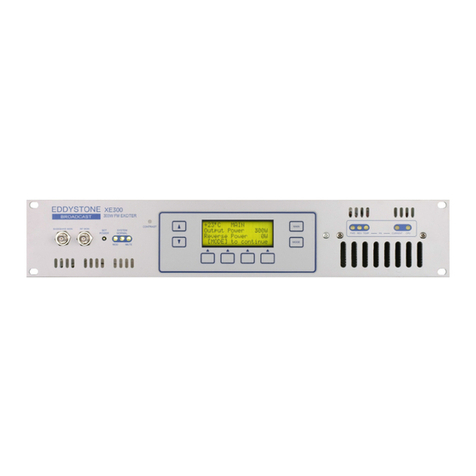
Eddystone Broadcast
Eddystone Broadcast XE150 Series Installation and operation
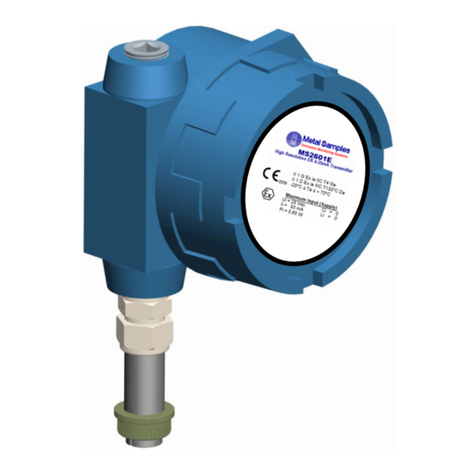
Metal Samples
Metal Samples MS2601E Operator's manual
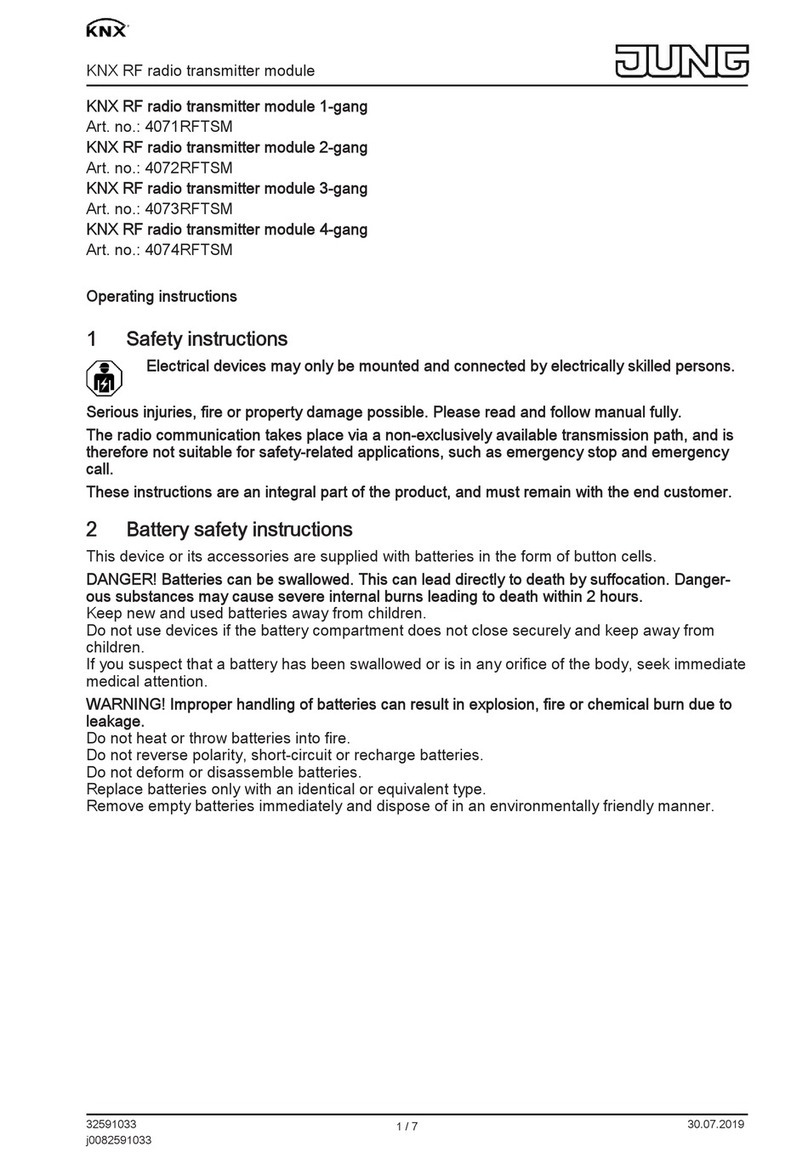
Jung
Jung KNX 4071RFTSM operating instructions

Marathon
Marathon OXYMITH TRANSMITTER F200060 Operator's manual

Emerson
Emerson Rosemount 644 quick start guide
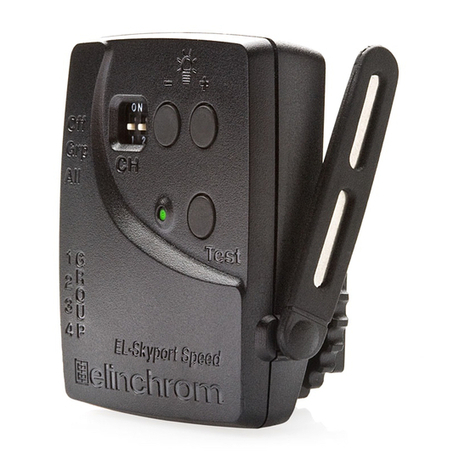
Elinchrom
Elinchrom EL-SKYPORT Transmitter Speed 19350 Instructions for use
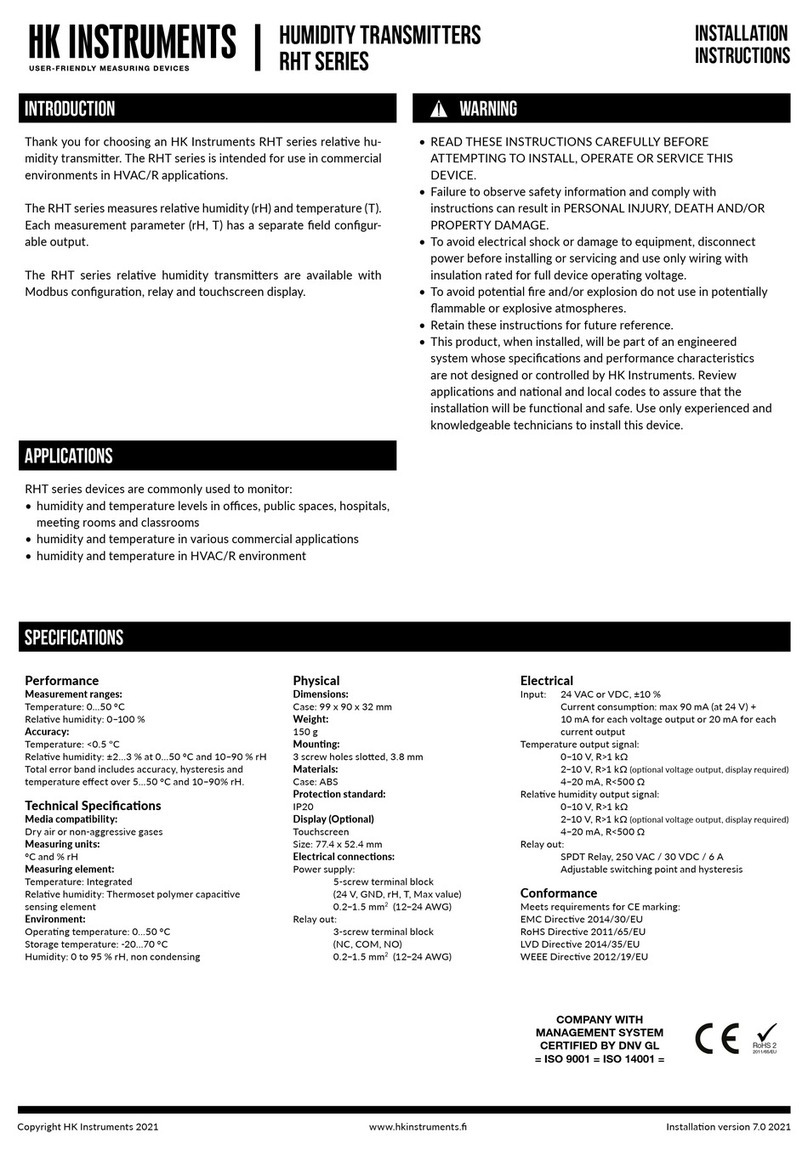
HK Instruments
HK Instruments RHT Series installation instructions

Ametek
Ametek Magnetrol E4 Modulevel Safety manual
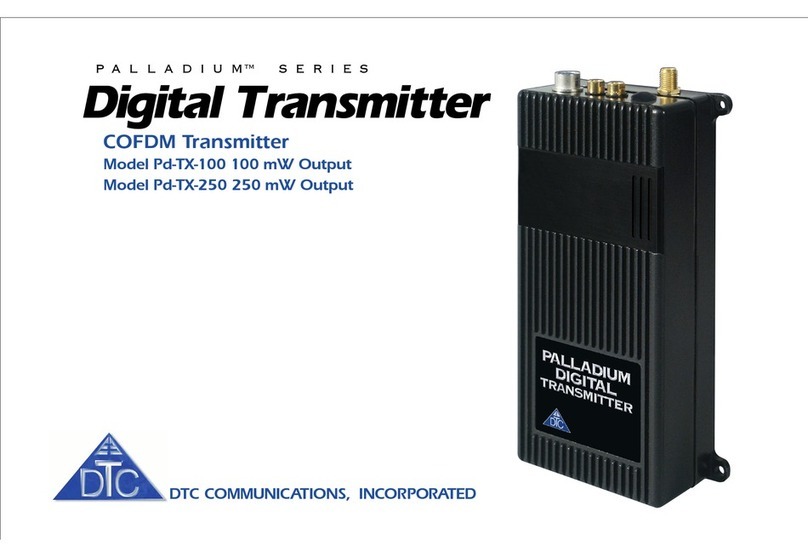
DTC
DTC Palladium Pd-TX-100 manual

AMX
AMX Classroom Transmitter TX-CT5 Schematic diagram

Absolute Process Instruments
Absolute Process Instruments APD 6010 quick start guide
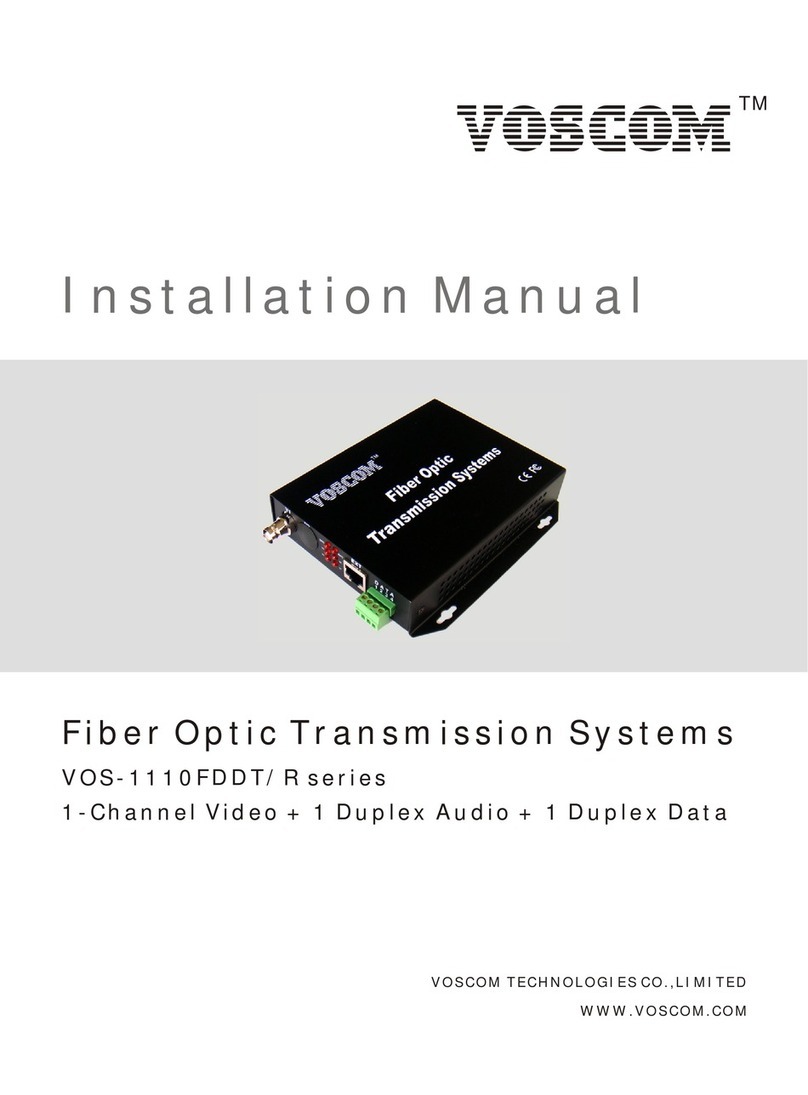
Voscom
Voscom VOS-1110FDDT Series installation manual



